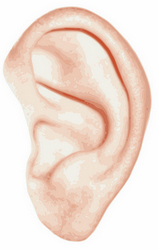The safety of ultrasonic devices (pest repellers included) is under the magnifying glass, read on to see which are the risks and advantages.
 Ultrasonic is a term that applies to all the sound waves emitted at a frequency above of 20,000Hz and it might have multiple applications, the pest-control is among them because most bugs, insects and animals can hear very well into the ultrasonic range. In fact, some go as far as 100,000Hz and moths reach an astonishing 240,000Hz. As far as safety goes, human cochlea prevents us from hearing such frequencies; it is a physical limitation that has nothing to do with ear training. It varies from a human being to the next, but most of us cannot hear anything beyond the 20,000Hz. So which are the effects on the human ear of ultrasonic pest control? Virtually none because we cannot hear it. That being said, there have been cases reported of people being able to hear a light buzz or annoying noise, but they represent a very small percentage of humankind.
Ultrasonic is a term that applies to all the sound waves emitted at a frequency above of 20,000Hz and it might have multiple applications, the pest-control is among them because most bugs, insects and animals can hear very well into the ultrasonic range. In fact, some go as far as 100,000Hz and moths reach an astonishing 240,000Hz. As far as safety goes, human cochlea prevents us from hearing such frequencies; it is a physical limitation that has nothing to do with ear training. It varies from a human being to the next, but most of us cannot hear anything beyond the 20,000Hz. So which are the effects on the human ear of ultrasonic pest control? Virtually none because we cannot hear it. That being said, there have been cases reported of people being able to hear a light buzz or annoying noise, but they represent a very small percentage of humankind.
 This is a very sensitive issue, since we know that future moms are not to be exposed to certain kinds of radiation like X-rays because it could provoke damage to the future born or even a sudden loss of the baby. But what about the ultrasonic sound waves of the pest control devices in the house? Well, according to recent studies, they are considered to be safe for future moms because no radiation is involved. In fact, they are more indicated than the poisonous solutions offered by some manufacturers in powder, liquid or spray. So, if there´s a pregnant woman in the house, read ultrasonic pest reject reviews article and give these top seller and very effective ultrasonic pest control devices we gathered for you a chance.
This is a very sensitive issue, since we know that future moms are not to be exposed to certain kinds of radiation like X-rays because it could provoke damage to the future born or even a sudden loss of the baby. But what about the ultrasonic sound waves of the pest control devices in the house? Well, according to recent studies, they are considered to be safe for future moms because no radiation is involved. In fact, they are more indicated than the poisonous solutions offered by some manufacturers in powder, liquid or spray. So, if there´s a pregnant woman in the house, read ultrasonic pest reject reviews article and give these top seller and very effective ultrasonic pest control devices we gathered for you a chance.
 As we stated before, some animals can hear well into the ultrasonic territory, feeling an annoying noise in their ears while the ultrasonic device is working. Dogs have a range that go from 20,000Hz to 40,000Hz while cats go from 30,000 to 60,000Hz, so they go into the ultrasonic territory very comfortably. Luckily for our pets, all the manufacturers are very well aware of this issue and therefore start their products´ reach at 80,000hz or above to avoid the interference with our household pets.
As we stated before, some animals can hear well into the ultrasonic territory, feeling an annoying noise in their ears while the ultrasonic device is working. Dogs have a range that go from 20,000Hz to 40,000Hz while cats go from 30,000 to 60,000Hz, so they go into the ultrasonic territory very comfortably. Luckily for our pets, all the manufacturers are very well aware of this issue and therefore start their products´ reach at 80,000hz or above to avoid the interference with our household pets.
Now, do these ultrasonic pest control devices work on what they should? We have posted a great article going deep in that subject on Do Ultrasonic pest repellers work so you can check it out. A greatly important thing to bear in mind is that we talk about non-rodent pets, but if you happen to have a hamster or any other rodent as a mascot, then place them on the other side of the house or avoid purchasing these solutions.

Birds are very well known for having the ability of defecating on the cleanest, whitest shirt they can see from the air and have perfect aiming. Well, the electronic pest-control devices also aim to keep them far from our t-shirts and flying on someone else´s trees, but they don´t use ultrasonic technology, but noises from their own predators sampled from real life situations. Those are proven to be very effective as long as you don´t have bird-pets.
It is safe to use ultrasonic pest-control devices in our homes with our non-rodent pets around. Simply because it has been taken into account by manufacturers themselves and since they aim for mice and rats, they designed them to work in a frequency that won´t bother the pets we do want inside our house.